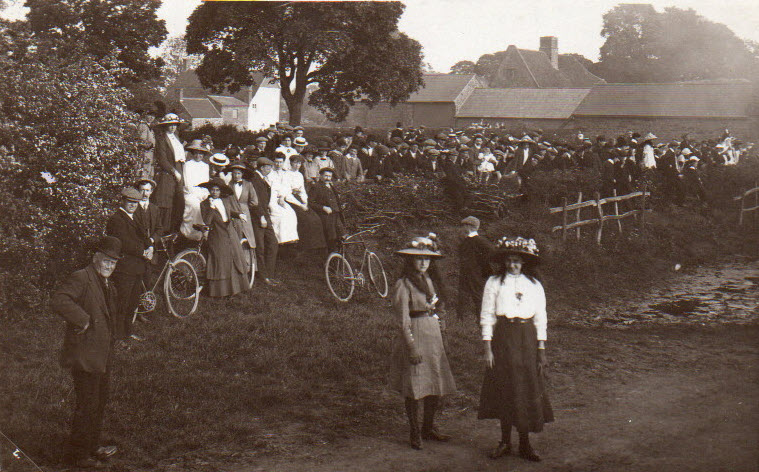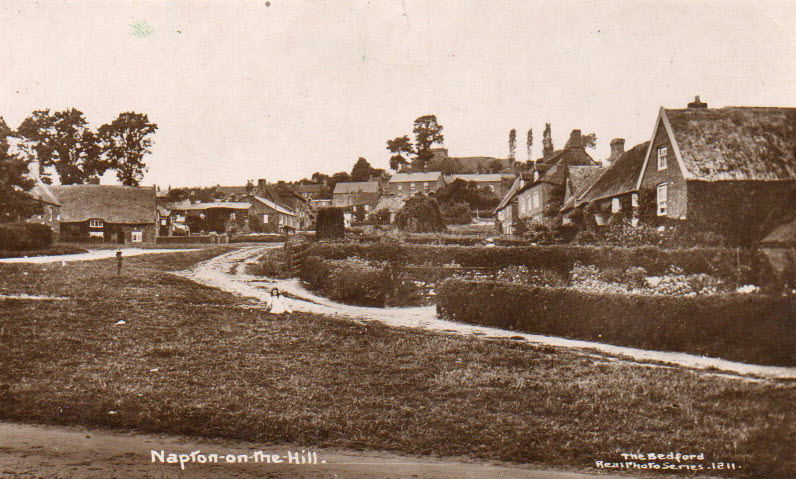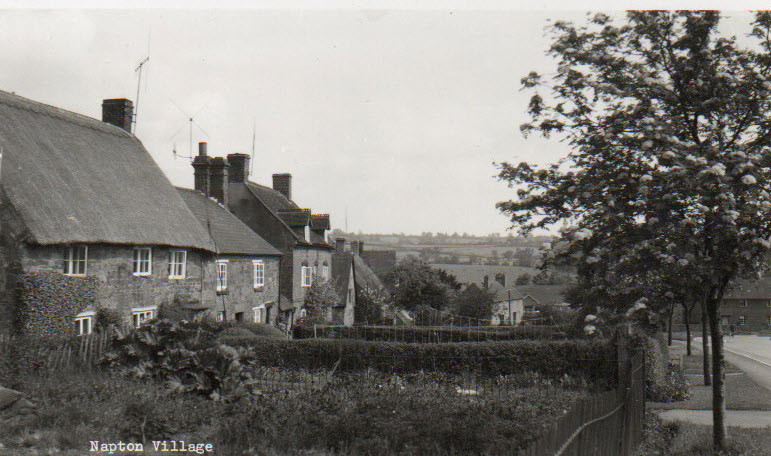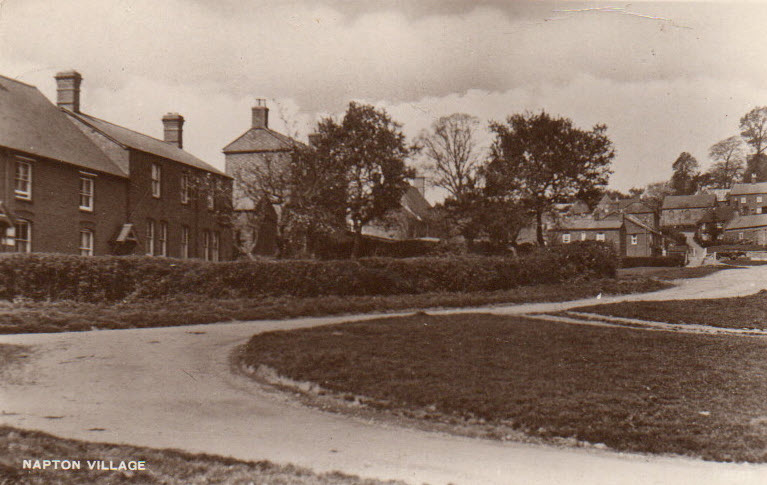The History and Life of Napton on the Hill:
A Warwickshire Village Through the Ages
Perched majestically on a prominent hill in the Warwickshire countryside, Napton on the Hill has evolved from an ancient settlement to a vibrant modern village while maintaining its distinctive character. With panoramic views spanning miles in every direction and a rich tapestry of historical developments, Napton represents a fascinating microcosm of English rural life through the centuries.
Origins and Early History
The name “Napton” itself reveals the village’s defining geographic feature, derived from the Old English words “cnaepp” meaning ‘hilltop’ and “tun” meaning ‘settlement ‘ This hill-top settlement was recorded in the Domesday Book of 1086 as “Neptone,” indicating its established presence even before the Norman Conquest. The village had approximately 150 inhabitants at this time, though no permanent houses were recorded as dwellings would have been simple structures often shared with animals.
Archaeological evidence suggests human activity in the area dates back significantly further, with findings from the Neolithic and Bronze Age periods. These early inhabitants were likely drawn to the strategic advantages of the hill, which rises to just over 500 feet above sea level, commanding views of the surrounding countryside that mostly sits around 300 feet in elevation.
In the feudal landscape of medieval England, the Domesday Book records that Robert de Beaumont, Count of Meulan, held the principal manor of Napton in 1086. The ownership history reflects the complex web of aristocratic inheritance in medieval England. When Henry I made de Beaumont the Earl of Leicester in 1107, Napton became part of the honour of Leicester Castle. Following the death of Robert de Beaumont, 4th Earl of Leicester, in 1204 without a male heir, Napton passed to his younger sister Margaret and her husband Saer de Quincy, who was made Earl of Winchester in 1207


Medieval Growth and Development
Medieval Growth and Development
During the medieval period, Napton flourished, becoming one of the largest settlements in Warwickshire. The village’s growth was reflected in its religious architecture, with the oldest parts of St. Lawrence Church dating to the 12th century, including Norman windows that remain visible in its north wall. Local folklore suggests that the church should have been built at the bottom of the hill. Still, on three occasions, the stones were mysteriously moved overnight, leading to their prominent position overlooking the village.
The economic importance of Napton was recognised when Edward II granted a market charter to Robert de Napton in 1321, allowing for a weekly Thursday market. On the same date, a fair charter was also granted for an annual fair on the feast of the Assumption (August 15). These commercial rights would have significantly boosted the village’s prosperity and regional importance.
16th to 18th Century Developments
By 1543, Napton had grown substantially, with records showing two windmills in operation and approximately 100 houses spread across four manors. This period saw the construction of more permanent stone dwellings, primarily for yeoman farmers. Some of these 16th-century buildings are still standing today, including one with a date stone of 1650.
The iconic windmill that dominates Napton’s skyline today has a structure dating from around 1725, though records of a mill on this site go back to at least 1543. This windmill ceased working by sail in 1900 and by steam in 1909, later falling into disrepair before being restored and eventually converted into a private dwelling.
The landscape of Napton underwent significant transformation following the Private Enclosure Acts, with Napton’s Enclosure enacted in 1779. This process converted the traditional open-field agriculture system to the current enclosed fields, with landowners building houses and barns on their newly consolidated holdings. Evidence of the old feudal strip system can still be seen in parts of Napton and neighbouring Shuckburgh.


The Canal Era and Industrial Growth
A transformative chapter in Napton’s history began with the arrival of the Oxford Canal in 1774. The canal’s chief engineer, Samuel Simcock, ingeniously routed it around three sides of Napton Hill to minimize the number of locks needed. However, to climb from Napton Wharf to the summit pound at Marston Doles still required eight locks around the hill.
The canal immediately brought economic benefits, making Napton the head of navigation for coal supplies to be forwarded by road to Oxford until 1777, when the canal reached Fenny Compton. In 1800, the Warwick and Napton Canal was completed, joining the Oxford Canal at Napton Junction, further enhancing the village’s strategic position in the waterways network.
The industrial potential of Napton was further realised with the establishment of brickworks in 1885 by Nelson, Watson, and Co. (though another source attributes the founding to Charles Watson in 1879). The brickyard, which appeared on an ordinance survey map dated 1886, exploited the clay deposits adjacent to the Oxford Canal and had its wharf for transportation. At its peak, it employed 110 people and was a major local employer until its closure in 1973.
19th and 20th Century Village Life
By 1811, the village had grown to 205 houses with 787 inhabitants. The Census of 1851 reveals a thriving community capable of supporting multiple tradespeople, including two bakers, two blacksmiths, 17 farmers and 20 graziers, four grocers, four shopkeepers, five shoemakers, and five inns and taverns.
Education became increasingly formalized with the establishment of a National School in 1821, followed by a school for girls in 1843 and an Infants school in 1849. These schools eventually merged in 1948 to form Napton Church of England School, which was later renamed St. Lawrence Church of England Primary School. The primary school moved to new premises in Dog Lane in 1997.
Further transportation developments came with the opening of Napton and Stockton Railway Station on August 1, 1895. This wooden station served the community until British Railways withdrew passenger service on September 15, 1958, and freight services on December 2, 1963. No trace of the station remains today as the cutting where it was located has been filled in, though some former railway workers’ cottages continue to be used as homes.
Contemporary Napton
Today’s Napton on the Hill maintains its distinctive character while continuing to evolve. The population has grown steadily, from 1,058 residents in 2001 to 1,144 in the 2011 census and 1,416 by 2021. The village presents a harmonious blend of old and new, with small stone and brick cottages and more spacious modern homes on the hillside.
The village offers an impressive array of amenities for its size, including three public houses, a social club, sports facilities, fishing pools, campsites, a village store with a post office, a general store and a coffee shop, plus canal-side shops and a marina. Many homes are clustered around the four Village Greens. In contrast, others are cut into the hillside itself, offering panoramic views of the surrounding countryside It is said that on a clear day, five counties are visible from certain vantage points.
The canals continue to play a vital role in the village’s life and economy, primarily serving leisure purposes. Napton sits at the centre of the busiest waterways system in the country, with approximately 8,000 holiday craft travelling through annually, carrying at least 24,000 passengers. Many holidaymakers stop to dine, shop, or visit St. Lawrence Church to admire the building and the spectacular views.
Community and Cultural Life
The village maintains a strong community spirit, exemplified by winning a Best Kept Village award in 2005. Local events punctuate the calendar, with the Napton Festival being a highlight- a two-day music festival held at the Village Hall Grounds featuring live music, food, and drinks.
For nature enthusiasts and walkers, the village offers the Napton Nature Trail and numerous footpaths, including a section of the Millennium Way. These paths provide opportunities to explore the abundant local wildlife while appreciating views of the historic windmill and church that crown the hill.